Fast profiling N-glycans in biotherapeutic antibodies by UHPLC-FLD with MS confirmation
Hear Dr. Stefan Mittermayr of the National Institute of Bioprocessing Research and Training (NIBRT) shares the development and optimization of a widely applicable UHPLC approach to fast, comprehensive profiling of 2-AA and 2-AB labeled glycans in IgG antibodies. the approach was validated with a human serum IgG and a commercial chimeric IgG1 mAb (infliximab). Glycan profiles were confirmed by exoglycosidase enzyme digestion and high-resolution, accurate-mass mass spectrometry, allowing increased sample throughput.
An ultrafast, batch-to-batch comparison of monoclonal antibody glycosylation
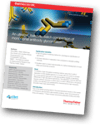 To develop a high-throughput screening method using HILIC UHPLC separation of 2AA-labelled glycans in a model mAb as a proof of concept for a more general approach to mAb glycoprofiling capable of identifying differences in high abundance gylcoforms. The separation must be rapid but requires sufficient resolution to allow batch-to-batch differences in the glycan profile to be identified and subsequently characterized by high-resolution, accurate-mass mass spectrometry.
To develop a high-throughput screening method using HILIC UHPLC separation of 2AA-labelled glycans in a model mAb as a proof of concept for a more general approach to mAb glycoprofiling capable of identifying differences in high abundance gylcoforms. The separation must be rapid but requires sufficient resolution to allow batch-to-batch differences in the glycan profile to be identified and subsequently characterized by high-resolution, accurate-mass mass spectrometry.
Comprehensive protein glycosylation comparison of an innovator monoclonal antibody to a candidate biosimilar by HILIC UHPLC analysis
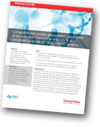 The goals of this application are to apply a fast, hydrophilic interaction UHPLC approach to the comprehensive glycan profiling of 2-AA labelled candidate biosimilar and an innovator mAb, to determine variations in glycan profile are observable between samples, and to confirm the glycan profiles by exoglycosidase enzyme digestion and high-resolution, accurate-mass (HRAM) mass spectrometry.
The goals of this application are to apply a fast, hydrophilic interaction UHPLC approach to the comprehensive glycan profiling of 2-AA labelled candidate biosimilar and an innovator mAb, to determine variations in glycan profile are observable between samples, and to confirm the glycan profiles by exoglycosidase enzyme digestion and high-resolution, accurate-mass (HRAM) mass spectrometry.











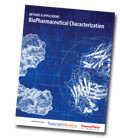 Read about...
Read about...
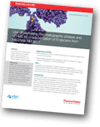 To evaluate chromatographic stationary phases for separation of oligosaccharides released from NIST monoclonal antibody reference material. To demonstrate the high mass accuracy achievable with Orbitrap-based mass spectrometry instrumentation for annotation of glycan moieties.
To evaluate chromatographic stationary phases for separation of oligosaccharides released from NIST monoclonal antibody reference material. To demonstrate the high mass accuracy achievable with Orbitrap-based mass spectrometry instrumentation for annotation of glycan moieties.
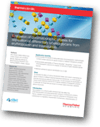 To evaluate the effect of various fluorescent labels and column chemistries for glycan analysis of different biopharmaceutical substances, i.e. erythropoietin and the monoclonal antibody trastuzumab. To demonstrate the applicability of mixed mode analytical columns for N-glycan analysis of therapeutic proteins, in particular for those that are known to contain highly branched, sialylated glycan structures.
To evaluate the effect of various fluorescent labels and column chemistries for glycan analysis of different biopharmaceutical substances, i.e. erythropoietin and the monoclonal antibody trastuzumab. To demonstrate the applicability of mixed mode analytical columns for N-glycan analysis of therapeutic proteins, in particular for those that are known to contain highly branched, sialylated glycan structures.
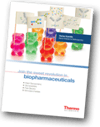 Biotherapeutic proteins, which include antibodies, are becoming the fastest growing category of drugs due to their efficacy for patient health. The complex nature of these large molecules brings major new challenges to the pharmaceutical scientist. The industry is undergoing a scientific revolution as it adapts to meet the challenges of characterizing biotherapeutics.
Biotherapeutic proteins, which include antibodies, are becoming the fastest growing category of drugs due to their efficacy for patient health. The complex nature of these large molecules brings major new challenges to the pharmaceutical scientist. The industry is undergoing a scientific revolution as it adapts to meet the challenges of characterizing biotherapeutics.
